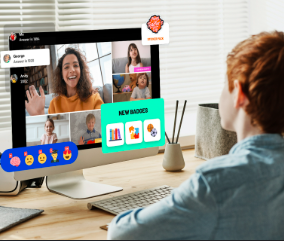Online learning has become a vital part of education, but keeping students engaged through a screen can be challenging. Fortunately, with a few creative strategies, educators can turn virtual classrooms into dynamic and engaging learning spaces. Here are practical ways to make online classes more interactive and enjoyable for everyone involved.
1. Start with an Icebreaker
Begin your classes with a quick icebreaker to set a positive tone. Simple questions like “What’s one interesting thing you learned this week?” or “If you could visit any country, where would you go?” help build a sense of community and encourage participation.
2. Use Live Polls and Quizzes
Interactive tools like Kahoot, Mentimeter, or Google Forms make it easy to gather feedback and test knowledge in real time. These activities break the monotony and give students an opportunity to actively engage with the content.
3. Incorporate Breakout Rooms
Most video conferencing platforms offer breakout rooms that allow students to work in small groups. Use these sessions for discussions, peer reviews, or collaborative projects. It’s a great way to mimic in-person group activities and foster teamwork.
4. Add Multimedia Content
Use short videos, animations, or slideshows to explain concepts in a more engaging way. Visual content helps students better understand the material and keeps lessons varied and interesting.
5. Encourage Student Participation
Invite students to share their screens, present topics, or lead short discussions. When students are actively involved, they are more likely to stay focused and retain information.
6. Provide Real-Time Feedback
Offer instant feedback during activities or discussions. Positive reinforcement and constructive suggestions show students that their contributions are valued and guide them in the right direction.
7. Keep Sessions Short and Focused
Attention spans can be shorter online. Consider breaking your class into smaller chunks with short breaks in between. This helps maintain energy and focus throughout the lesson.
8. Use Gamification Techniques
Turning learning into a game adds fun and motivation. Set up friendly competitions, reward participation with digital badges, or create point systems for tasks completed.
9. Be Approachable and Positive
Your tone and attitude set the stage for the learning environment. Being friendly, understanding, and approachable makes students more comfortable and willing to engage.
10. Gather Feedback Regularly
Ask students what they enjoy or find challenging about the class. Use this input to improve your teaching methods and adapt your approach to better meet their needs.
Final Thoughts
Creating an interactive online classroom doesn’t require complex technology—just a bit of creativity and a student-centered approach. By making small changes to how lessons are delivered, teachers can create a more engaging and effective learning experience for all.














